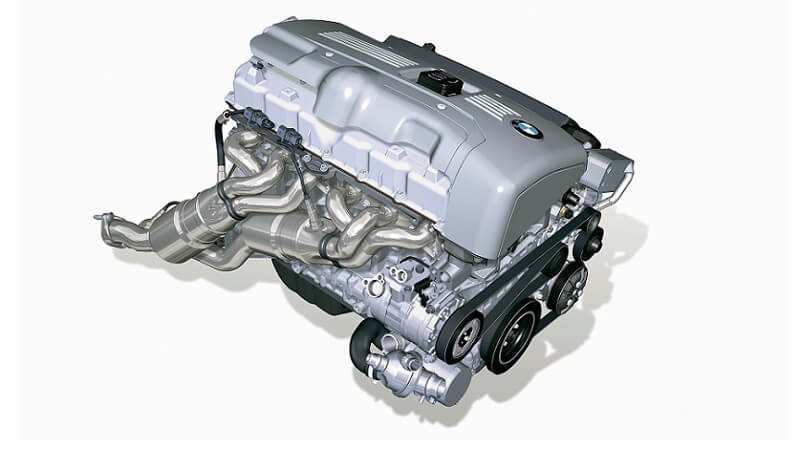The third generation of the M3 holds a special place in many BMW enthusiasts’ hearts. Widely considered to be the last raw M3 — the last true driver’s car in the series, the E46 M3 still gives much younger challengers a proper run for their money. That being said, as good as it was, it wasn’t perfect.
The car came with two transmission options — a 6-speed manual, and an SMG II gearbox. The latter turned out to be the cause of a serious issue that pulled many cars off the road. More specifically, the M3 E46 SMG pump issue is what caused all the ruckus, and today we’ll try to give you a brief rundown on what this issue means and how serious it is, or was.

BMW SMG II — The Ultimate Paddle Box?
Contrary to popular belief, the SMG II gearbox that BMW has installed in the E46 M3 isn’t an automatic gearbox, nor was it the first gearbox of its kind to be used on a BMW M3 car. Oh no, it was a fully manual setup with a clutch and everything, but no clutch pedal. Getrag and Sachs wanted to make something that is close to Getrag’s 6-speed manual in terms of build but with a hint of Williams BMW F1 transmission mechanics.
The result was a sequential gearbox that came with no clutch pedal and was fitted with paddle shifters. Although you could also shift gears using the gear selector knob, only instead of an H pattern, you’d row gears in a sequential pattern like with any other sequential system.
Where most die-hard enthusiasts hit a divergence point with BMW as far as SMG transmission went, was the addition of the automatic mode. Despite this being a sequential box, this mode alone was enough for many to shun the SMG as inferior to the now legendary Getrag 6-speed manual.
Today, things are changing in favor of the SMG. However, some argue that such a change of heart was brought on by a severe lack of manual M3 E46s out there. That being said, there’s a reason why this is the case.
As it turns out, the manual gearbox elitists were correct to avoid the SMG II early on, but not because of their anti-anything-non-manual argument. No, they were right to avoid the sequential gearbox because it turned out to have a pretty serious Achilles’ heel.
E46 SMG Pump Issue – What Causes It?
If you own an M3 E46 with an SMG II gearbox, you’ve probably seen the dreaded cog wheel icon at least once during your time owning the car. On the odd chance that you’re among the lucky few who never had issues with their sequential transmissions, you either know someone who has had their car drop out of gear following the cog icon, or you’ve at least read one doom and gloom thread on your BMW enthusiasts forum of choice.
The sequential M gearbox is anything but simple. In essence, it’s a hydraulic-driven manual transmission that is packed full of extras and goodies such as an early version of a hill-assist, different shift programs, and more. To make all that happen, BMW had to use a fairly complex network of hydraulics, which were driven by the SMG hydraulic pump.
That pump is where most issues with this transmission start and end, at least the serious ones. Decades have passed since we first heard the horror stories of SMG II-equipped cars dropping out of gear while their owners were doing 70 MPH on the freeway, leaving them dead in the water with no real ability to limp the car to the nearest off-ramp.
High Heat, the Death of All Things Electric

Yet, despite so much time passing by, there are still conflicting reports of why these pumps, or more specifically the electric motors inside them, fail the way they do. The general consensus is that Bavarian engineers simply chose a bad spot to mount the pump, i.e. way too close to the engine block.
The heat from the engine would cut the lifetime of the electric motor short, causing it to grow weaker over time until it reaches a point where it can no longer deliver the necessary pressure to run the pump. Once the drop in pressure occurs, it usually renders the car unable to stay in gear. Most SMG pump issues of this nature manifest themselves well before the car has 100,000 miles on the odometer.
Another potential culprit that many feel affects the SMG II is the overly optimistic transmission fluid flush cycle. Many owners swear by doing a transmission fluid flush every 20,000 miles, using quality MTF-LT-2 fluids, thus keeping the fluid in a pretty good condition at all times.
So many SMG pumps were replaced within the first 10 years of the M3 E46 production that many owners contemplated a class action lawsuit against the German manufacturer.
After all, not only did it suck being left on the side of the road with a dead car, but BMW demanded around $3500 to replace the pump.
Is an SMG Equipped E46 M3 a Ticking Financial Time Bomb?
The answer is that it depends. Back in the day, it was pretty much an unwritten rule to have a few grand stashed away somewhere just in case the hydraulic SMG pump decides to head for Valhalla.
BMW was pretty adamant about replacing the entire unit instead of just the electric motor inside the pump. Since there weren’t really any other options available, people did what they had to do, begrudgingly.
Now, there are far more options. You can, for one, get just the electric motor, which is often enough to get the car back on the road. Instead of paying north of $3,000, you’re now looking at spending $600 or so. It’s still a painful purchase, but far more acceptable than the alternative.
Don’t Forget the Relay!
Now that we as a community have some hands-on experience with these pumps, their motors, and the SMG II as a whole, people have recognized that once you replace the motor, you should also replace the relay which tells the motor when to come online and when to turn off.
Faulty relays are right behind the SMG pump issue in terms of things that will leave you stranded on the side of the road. So much so that people often replace these relays as means of preemptive maintenance.
SMG Pump Issue Diagnostics — Not an Easy Job

This is where things turn a little sour for most people. While the electric motor failure accounts for the majority of SMG pump issues, there are still the other 15-20% of cases where the motor could be fine. Well, you’re probably thinking, we can simply diagnose those other things and replace them as need be, right?
Unfortunately, that’s not the case. A failed pump results in a drop in oil pressure within the system, which triggers the SMG-specific codes. The trouble is that a failed solenoid or a relay will do the same. Many people have found themselves replacing the electric motor only to find out that it’s the solenoid that has triggered the code in the first place.
E46 M3 With an SMG II Transmission — Yay or Nay?
Like with most things in life, the answer to this question isn’t so simple. On one hand, the issues related to the SMG II gearboxes have made them somewhat notorious in the community. On the other hand, a byproduct of such a bad rap is a decent availability of fairly healthy cars that haven’t been ragged on all that much. You could find yourself an M3 with a decent amount of miles and a relatively fresh engine.
The main question you need to ask yourself is whether you can live with a sequential gearbox? Is that something that will affect your experience of the car? Because the mechanical issues are no longer dramatic. If one of these fails on you, getting back on the road wouldn’t be too complicated.
At the end of the day, it all comes down to your personal preference. That being said, if you’re in the market for an E46 M3 and you run into a well-maintained, clean car that just so happens to feature the sequential M gearbox, you might want to jump on it.





